Physical Address
304 North Cardinal St.
Dorchester Center, MA 02124
Physical Address
304 North Cardinal St.
Dorchester Center, MA 02124
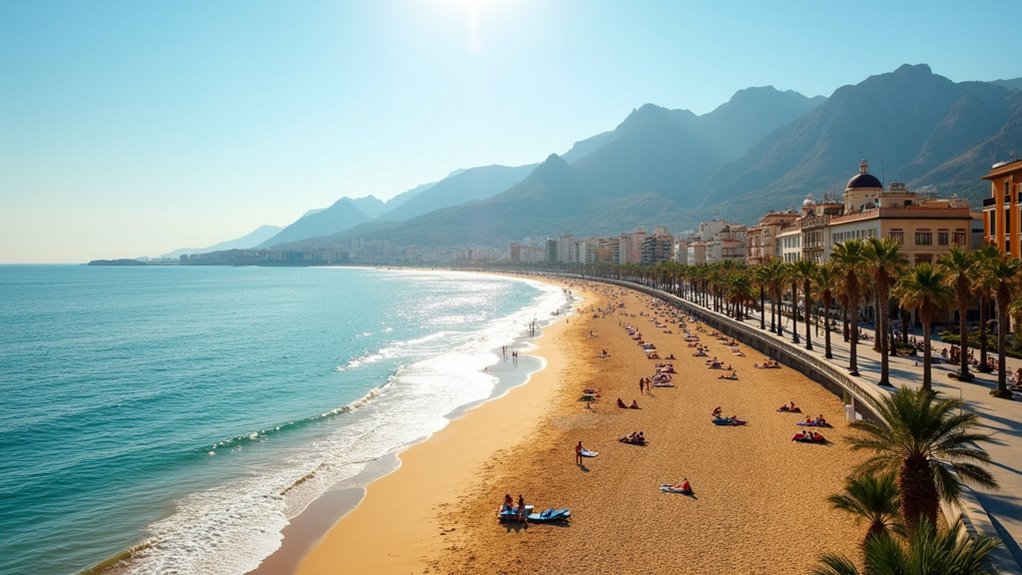
Looking for Spain's sunniest treasure? Málaga captivates with pristine beaches, mountain adventures, and Picasso's heritage.
Absolutely, Málaga deserves a spot on your travel list. You’ll enjoy nearly 3,000 annual sunshine hours, Blue Flag beaches, and Picasso’s artistic legacy. The city blends Moorish-Spanish architecture with exceptional tapas culture and fresh seafood. It’s budget-friendly and serves as a perfect base for exploring Andalusia’s natural parks, from sierras to limestone formations. Vibrant festivals and efficient transportation options make experiencing this Mediterranean gem’s diverse attractions remarkably accessible.
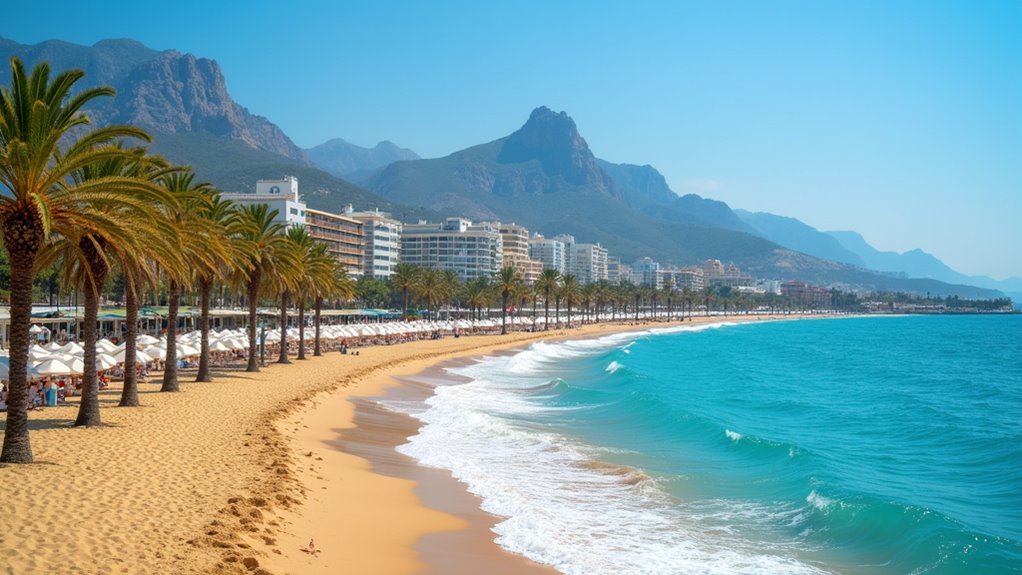
While many European destinations lose their appeal in winter months, Málaga shines bright with an impressive 2919 hours of sunshine annually. You’ll enjoy about 9.5 daily sunshine hours on average, with the sun present 66% of the time—even during winter when northern Europe remains gray and cold. Málaga ranks among the warmest places in Europe, making it an ideal destination for sun-seekers year-round.
This perpetual sunshine perfectly complements Málaga’s stunning Blue Flag beaches along the Costa del Sol’s 150km coastline. With water temperatures reaching 22-23°C from July to September, these months offer the most pleasant swimming conditions. Playa de la Malagueta sits conveniently in the city center, while Playa de la Caleta offers picturesque views and tranquil waters. For fewer crowds, head to Playa de las Acacias.
Most beaches are easily accessible by public transport and feature clear waters and fine sand ideal for swimming, snorkeling, and various water sports throughout most of the year.
As you wander through Málaga’s historic streets, you’ll be struck by the magnificent fusion of Moorish and Spanish architectural styles that define the city’s unique character. The Alcazaba Fortress and Castle of Gibralfaro stand as impressive reminders of Málaga’s Moorish past, offering panoramic Mediterranean views that won’t cost you much more than comfortable walking shoes. La Manquita cathedral near Vamos Academy showcases intricate geometric patterns typical of the region’s Moorish architectural heritage. Unlike European capitals such as Vienna and Prague, Málaga offers a distinctly Andalusian architectural experience blending North African and Spanish influences.
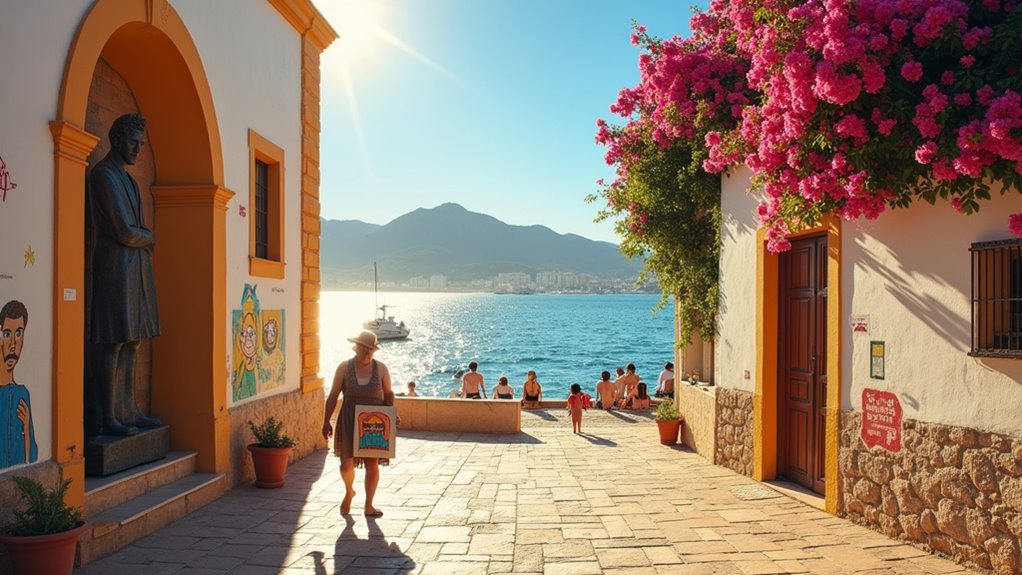
Beyond the architectural marvels, Málaga proudly claims its status as the birthplace of Pablo Picasso, one of the most influential artists of the 20th century.
You can visit his birthplace museum in Plaza de la Merced, which has been a heritage site since 1983 and a museum since 1998. The famous attraction houses a remarkable collection of 238 lithographs created between 1930-1960 among other significant works. The Museo Picasso Málaga, opened in 2003, houses 285 of his works donated by family members and is located in the historic Buenavista Palace.
Málaga’s arts scene extends beyond Picasso, featuring numerous galleries, museums, and cultural festivals throughout the year. This artistic legacy attracts visitors worldwide while providing educational opportunities through workshops and community events.
The thriving creative community contributes markedly to the local economy and cultural identity, making Málaga a must-visit destination for art enthusiasts. Unlike Finland’s hidden gems that offer budget-friendly adventures, Málaga provides a rich cultural experience that justifies every euro spent.
When you explore Málaga’s culinary landscape, you’ll discover a tapas culture that stands among Spain’s finest. The city’s Moorish-Mediterranean fusion creates distinctive flavors evident in local specialties like espetos de sardinas (beach-grilled sardines) and ajo blanco (almond-garlic soup).
The city’s coastal location ensures exceptional seafood sustainability, with artisanal fishing methods still practiced in nearby villages like El Palo and Pedregalejo. From the pristine beaches to the mountain sierras, Malaga’s diverse landscapes contribute to its rich culinary offerings. Visitors can enhance their culinary journey by dining at El Pimpi, a historic bodega famous for its local wines and tapas where many celebrities have left their autographs.
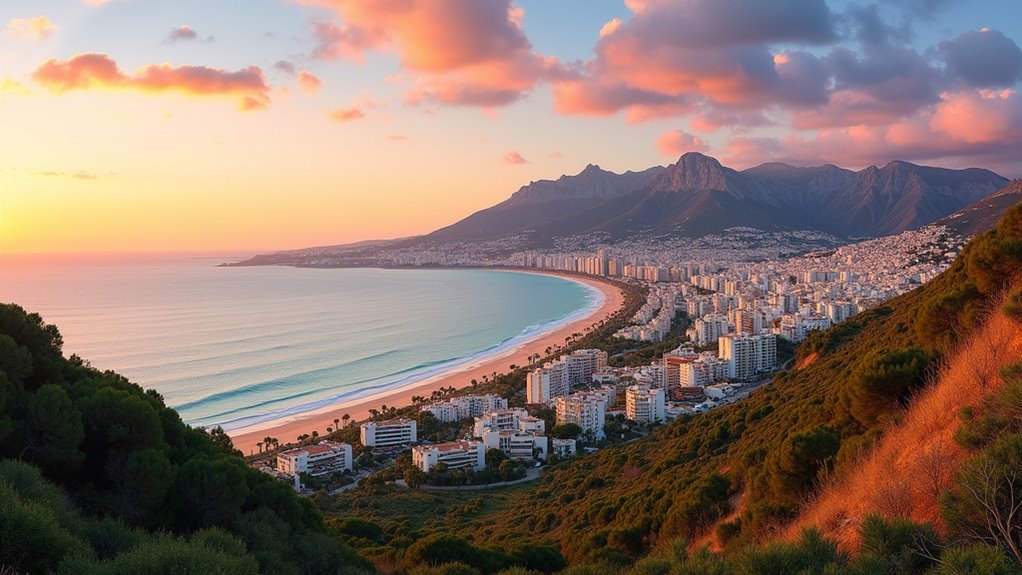
Málaga serves as an exceptional gateway to some of Spain’s most impressive natural landscapes, with five distinct natural parks within easy reach of the city center. You can explore Montes de Málaga’s pine forests with panoramic sea views just minutes from downtown or venture to Sierra de las Nieves for unique ecosystems.
Nature enthusiasts will find endless opportunities: hike diverse trails, mountain bike through rugged terrain, or experience the thrilling Caminito del Rey.
For wildlife viewing, don’t miss Fuente de Piedra Lagoon’s flamingos or the protected species of Sierra Bermeja. The Rio Guadalhorce Nature Reserve offers excellent opportunities to observe wild flamingos and diverse bird species in their natural habitat.
El Torcal’s otherworldly limestone formations offer perfect day trips with affordable guided tours available. Unlike tourist hotspots such as Benidorm, Málaga provides budget-friendly adventures that don’t compromise on natural beauty or experience quality.
The city’s strategic location means you can wake up by the beach and spend your afternoon in mountain forests—a rare combination that adds tremendous value to your Spanish adventure.
Offering remarkable value for discerning travelers, Málaga strikes a perfect balance between luxury experiences and budget-conscious options. You’ll find 4-star hotels averaging $115 per night, while luxury accommodations run around $171 – both considerably less than comparable European destinations.
Highly-rated boutique accommodations like Patio de Arance and Carmen Apartamentos offer exceptional quality with near perfect ratings despite their budget-friendly prices.
Unlike the European charms found in Austria or Norway, Málaga provides a distinctly Mediterranean experience at a fraction of the cost.
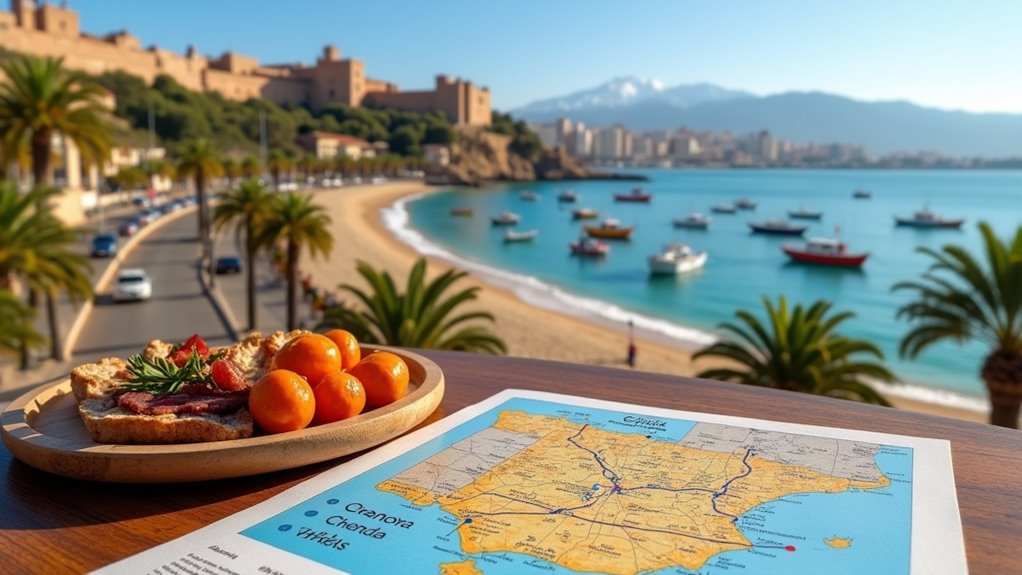
Beyond its local treasures and affordable luxury, Málaga’s geographic position makes it an unbeatable launching point for exploring Andalusia’s diverse wonders. With Málaga Airport’s international connections and all-encompassing train network, you’re perfectly positioned for adventure.
From here, you can reach Granada’s magnificent Alhambra in just 90 minutes, explore Córdoba’s mesmerizing Mezquita-Catedral in an hour by high-speed AVE train, or visit Ronda’s dramatic El Tajo gorge within two hours. While exploring, you might hear locals using popular Spanish phrases that add authenticity to your Andalusian experience.
Nature enthusiasts can hike the thrilling Caminito del Rey’s cliffside walkways or explore El Torcal’s otherworldly karst formations. Day trippers can also venture to Setenil de las Bodegas where houses are uniquely built into rock overhangs.
For budget-conscious travelers, public transportation costs just €20-50 round-trip to major cities, while rental cars (from €30/day) offer flexibility to combine destinations like Frigiliana’s whitewashed streets with Nerja’s stunning caves in a single excursion.
Throughout the year, you’ll find Málaga’s cultural calendar bursting with festivals that transform the city’s streets into vibrant celebrations of history, faith, and Andalusian traditions. From the colorful performances of the Malaga Carnival in January-February to the deeply moving Semana Santa processions at Easter, these events offer authentic culture without breaking your budget. During Christmas, the city becomes one of Europe’s most beautiful with its spectacular light displays, particularly on Calle Larios. Like Paphos’s rich cultural events, Málaga offers visitors a perfect itinerary for experiencing authentic local celebrations year-round.
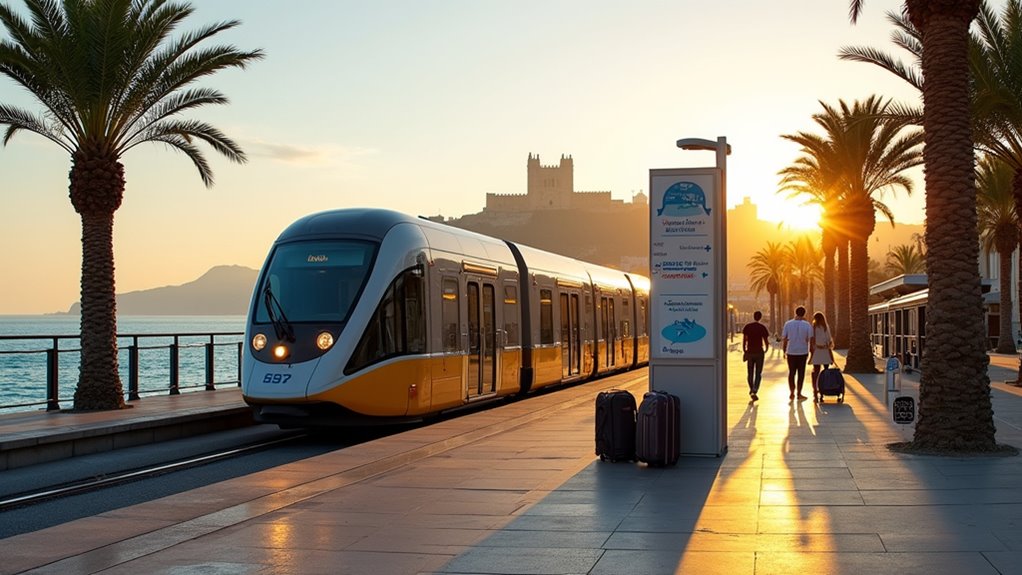
When you’re ready to leave the festivities behind and explore Málaga’s treasures, you’ll find the city excels at making your journeys effortless. The extensive public transport network includes over 50 bus lines, two metro lines, and commuter trains that connect all key points.
You’ll appreciate how the integrated ticketing system lets you seamlessly switch between transport modes.
For coastal excursions, hop on the Cercanías train to reach Torremolinos or Benalmádena without the hassle of parking.
Night buses marked with ‘N’ ensure you’ll never be stranded after evening outings.
The transport information is available in multiple languages, with clear signage throughout the city.
María Zambrano station serves as your gateway to other Andalusian cities, making day trips remarkably convenient.
The EMT Málaga app provides real-time information on routes, schedules, and stops to help you navigate the city efficiently.
After a day of exploring, you can relax at one of the many restaurants offering Turkish cuisine influences that have made their way into Málaga’s diverse food scene.
Málaga isn’t just a destination; it’s a value traveler’s jackpot where every euro stretches like the endless Costa del Sol shoreline. Like a perfectly balanced paella, the city offers satisfying portions of culture, nature, and gastronomy without breaking the bank. You’ll leave wondering why you ever considered more expensive European hotspots when this Andalusian gem delivers sunshine and substance in equal measure.